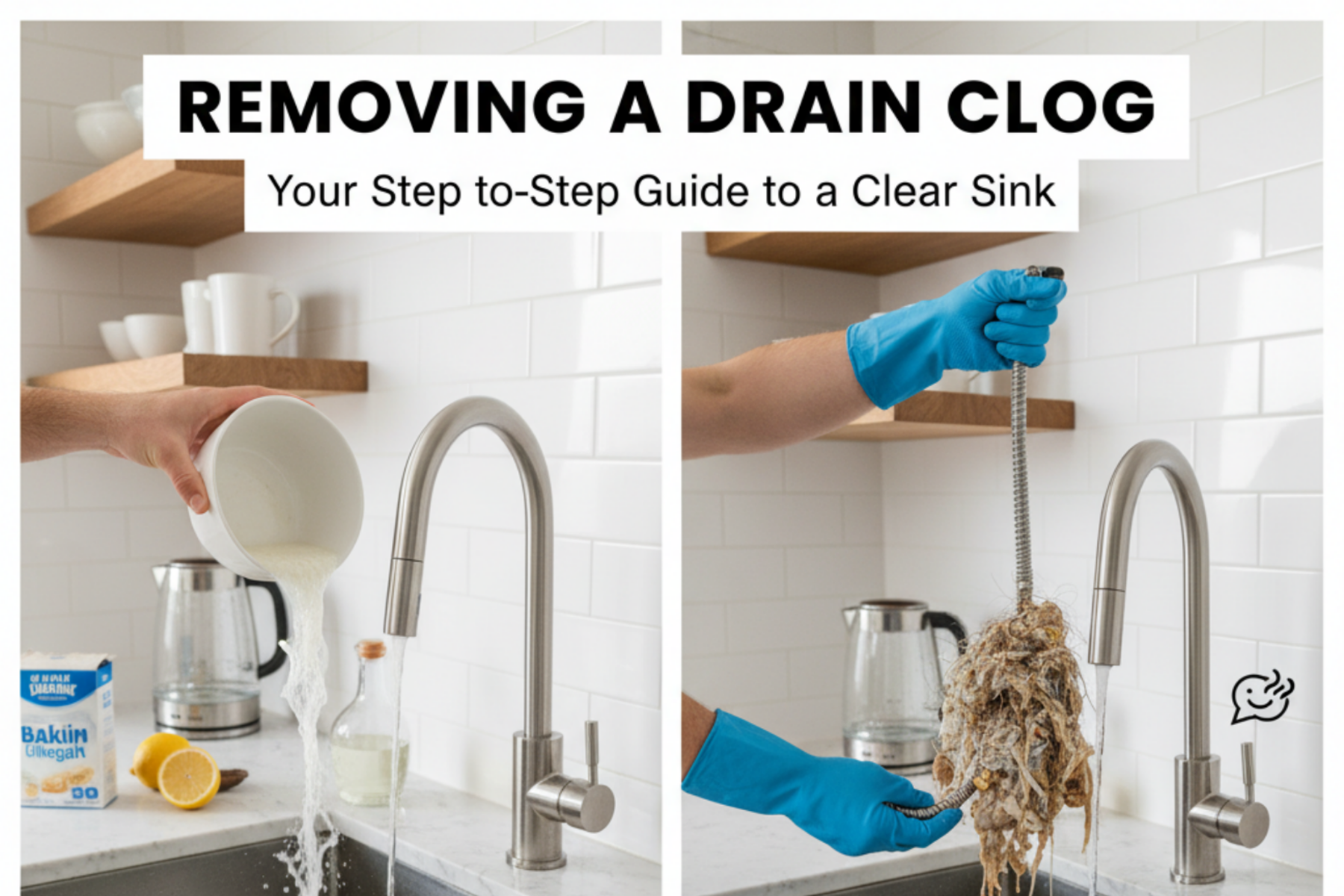
%204.svg)
%204.svg)
%204.svg)
%204.svg)
%204.svg)
Few things bring kitchen life to a halt faster than a clogged drain. Water starts pooling, dishes pile up, and frustration sets in. But not all clogs require an emergency plumber call. With the right tools and a step-by-step approach, you can often clear the blockage yourself. Here’s a complete guide to removing a drain clog and getting your kitchen back in order.

The first step is identifying the type of clog. Slow drains usually point to grease or soap buildup, while a total blockage often means something larger—like food particles or foreign objects—has lodged in the pipe. Before you dive in, remove any standing water from the sink with a cup or sponge. This gives you a clearer view of the problem and prevents an even bigger mess.
Start with the simplest methods first. A mixture of baking soda and vinegar is a tried-and-true natural solution. Pour half a cup of baking soda into the drain, followed by half a cup of vinegar. The fizzing action helps break down grease and debris. Let it sit for 15 minutes, then flush with boiling water. This eco-friendly method often clears minor clogs without chemicals.
If that doesn’t work, it’s time to use tools. A plunger can be very effective for sink drains—just be sure to block the second drain opening (if you have one) to create suction. For deeper clogs, a plumber’s snake or auger can reach further into the pipes to dislodge debris. Insert the snake, twist it gently, and pull back to remove the blockage. Always move slowly to avoid damaging pipes.
Sometimes, the clog is in the P-trap (the curved pipe under your sink). Place a bucket underneath, loosen the slip nuts, and remove the trap. Clear out any gunk and rinse it before reattaching. This method solves a large percentage of sink clogs and gives you direct access to the problem. If the clog persists even after this, it may be deeper in your plumbing system and require a professional plumber.
At I Hate My Sink, we know how disruptive a clogged sink can be. The key is starting simple, working step by step, and knowing when it’s time to call in reinforcements. With the right approach, most clogs are solvable at home. But if your sink is constantly clogging, it may point to bigger plumbing issues—or even the need for a new sink setup. Either way, don’t let a clog make you hate your sink—take action and restore the flow.